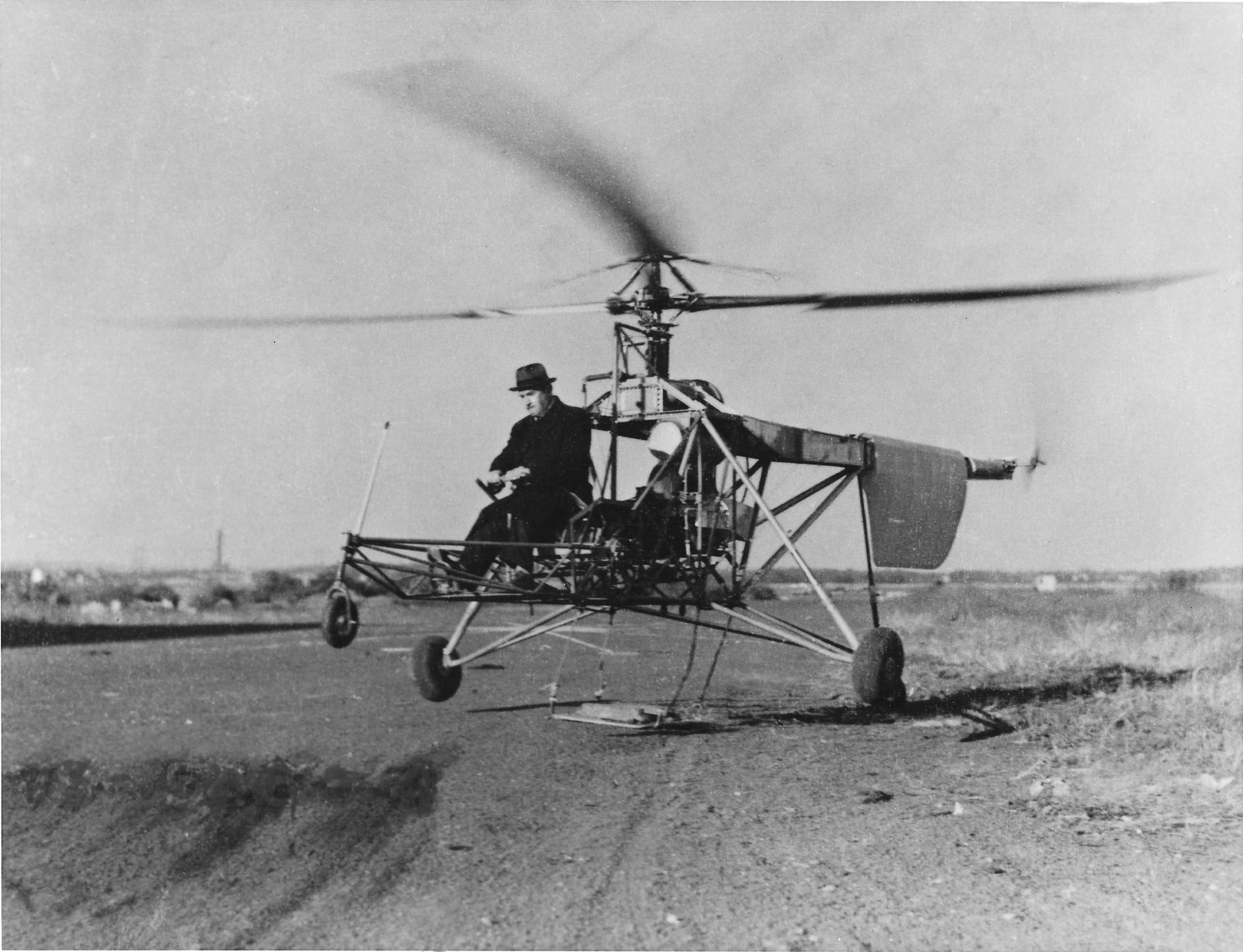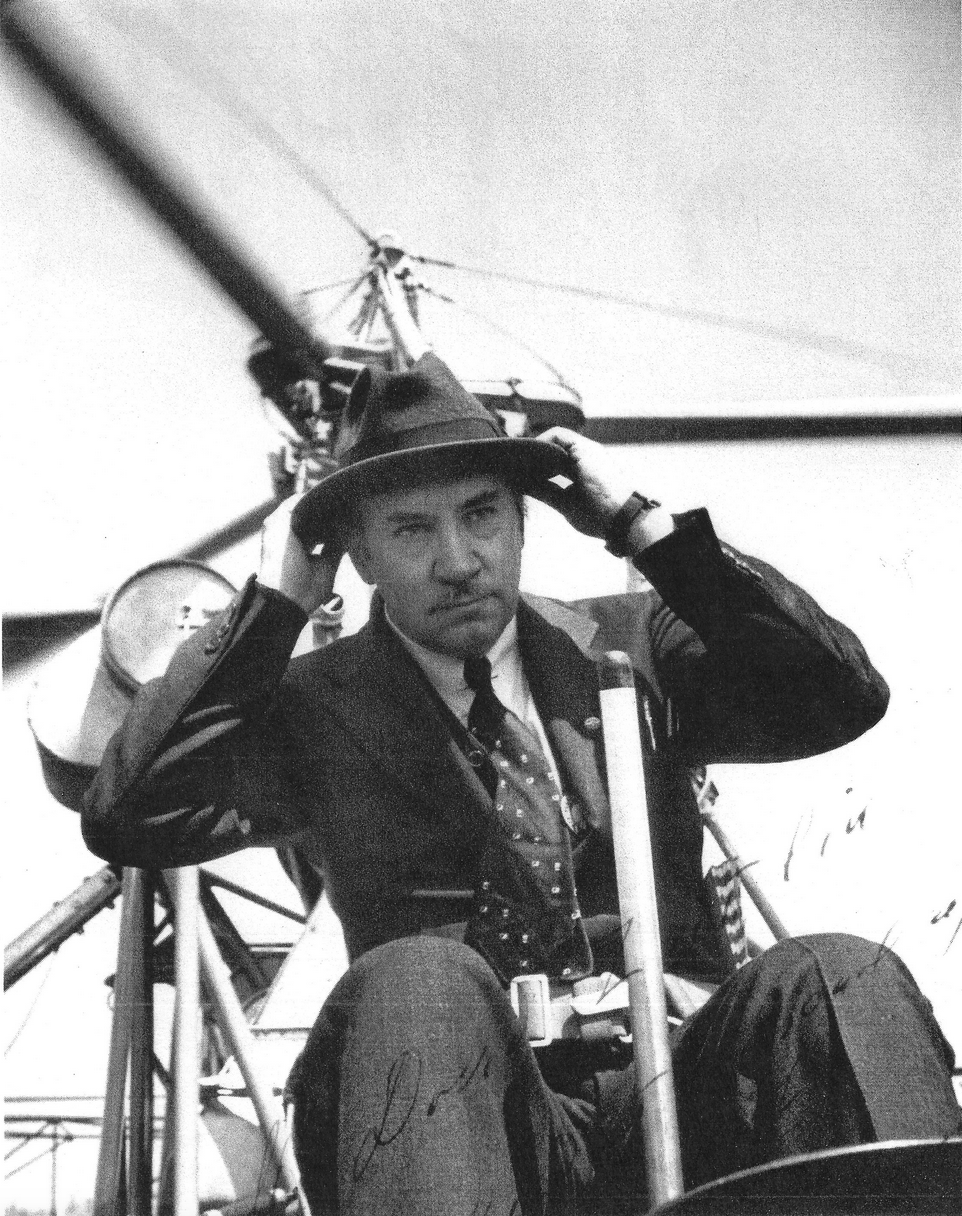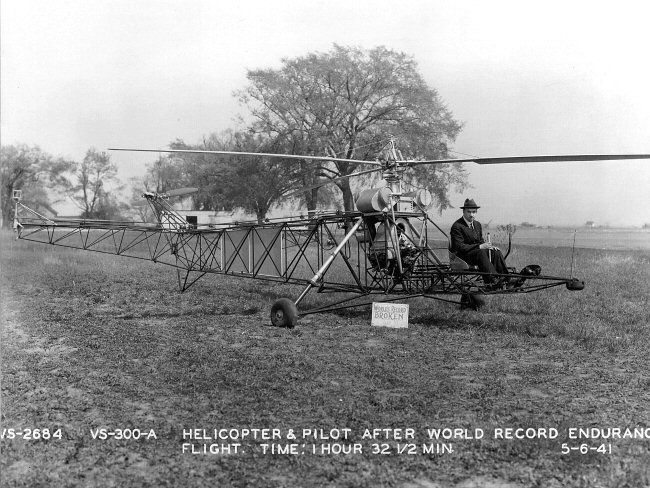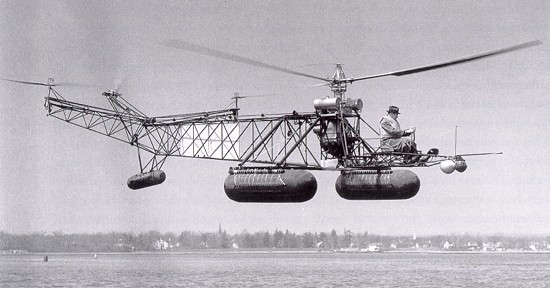
 17 April 1941: Igor Sikorsky’s Vought-Sikorsky VS-300 helicopter went through various rotor configurations during development as he searched for a combination that would give stability, anti-torque control, as well as lateral and yaw control. By April 1941, the VS-300 was configured with a single main rotor for lift and three smaller tail rotors to provide anti-torque and directional control.
17 April 1941: Igor Sikorsky’s Vought-Sikorsky VS-300 helicopter went through various rotor configurations during development as he searched for a combination that would give stability, anti-torque control, as well as lateral and yaw control. By April 1941, the VS-300 was configured with a single main rotor for lift and three smaller tail rotors to provide anti-torque and directional control.
This was not the ultimate solution, but he had the aircraft fitted with three inflatable pontoons and on 17 April, made a successful water landing, demonstrating that the helicopter could be a practical amphibious aircraft. During a lecture to the Rotating Wing Section of the Tenth Annual Meeting of the Institute of Aeronautical Sciences, Igor Sikorsky gave a brief description of the flight:
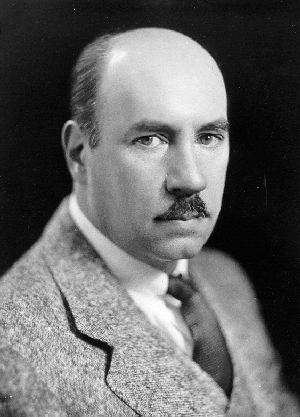
“On April 17 the helicopter, mounted on rubber floats, was repeatedly taken off from water and landed on water and then landed on ground, demonstrating for the first time a direct lift aircraft with excellent amphibian characteristics on which no adjustments whatsoever are needed when going from water to land and vice versa.”
The VS-300 had a welded tubular steel airframe and used a 28-foot (5.34 meters) diameter, fully-articulated, three-bladed main rotor, which turned clockwise (as seen from above) at 260 r.p.m. (The advancing blade was on the left. This would later be reversed.) The main rotor had collective pitch control for vertical control, but cyclic pitch (Sikorsky referred to this as “sectional control”) for directional control would not be developed for another several months.
The tail “propellers” (what we now consider to be rotors—one vertical and two horizontal) each had two blades with a diameter of 7 feet, 8 inches (2.337 meters) and turned approximately 1,300 r.p.m. The vertical rotor provided “torque compensation” (anti-torque) and the blade pitch was fully reversible. The horizontal rotors were mounted on 10-foot (3.048 meters) outriggers at the aft end of the fuselage. For lateral control, the pitch on one rotor was increased and the other decreased. For longitudinal control, the pitch of both rotors was increased or decreased together.
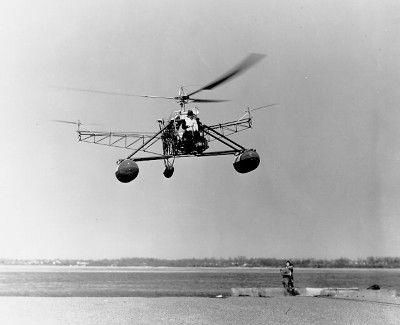
 The VS-300 was originally equipped with an air-cooled, normally-aspirated 144.489-cubic-inch-displacement (2.368 liter) Lycoming O-145C-3 four-cylinder horizontally-opposed engine which was rated at 75 horsepower at 3,100 r.p.m. According to Mr. Sikorsky, “early in 1941,” the Lycoming engine was replaced by an air-cooled, normally-aspirated 198.608 cubic inch (3.255 liter) Franklin 4AC-199-E, a four-cylinder horizontally-opposed overhead valve (OHV) direct-drive engine with a compression ratio of 7:1, rated at 90 horsepower at 2,500 r.p.m. It is not known if this change was made prior to 17 April.
The VS-300 was originally equipped with an air-cooled, normally-aspirated 144.489-cubic-inch-displacement (2.368 liter) Lycoming O-145C-3 four-cylinder horizontally-opposed engine which was rated at 75 horsepower at 3,100 r.p.m. According to Mr. Sikorsky, “early in 1941,” the Lycoming engine was replaced by an air-cooled, normally-aspirated 198.608 cubic inch (3.255 liter) Franklin 4AC-199-E, a four-cylinder horizontally-opposed overhead valve (OHV) direct-drive engine with a compression ratio of 7:1, rated at 90 horsepower at 2,500 r.p.m. It is not known if this change was made prior to 17 April.
© 2019, Bryan R. Swopes
